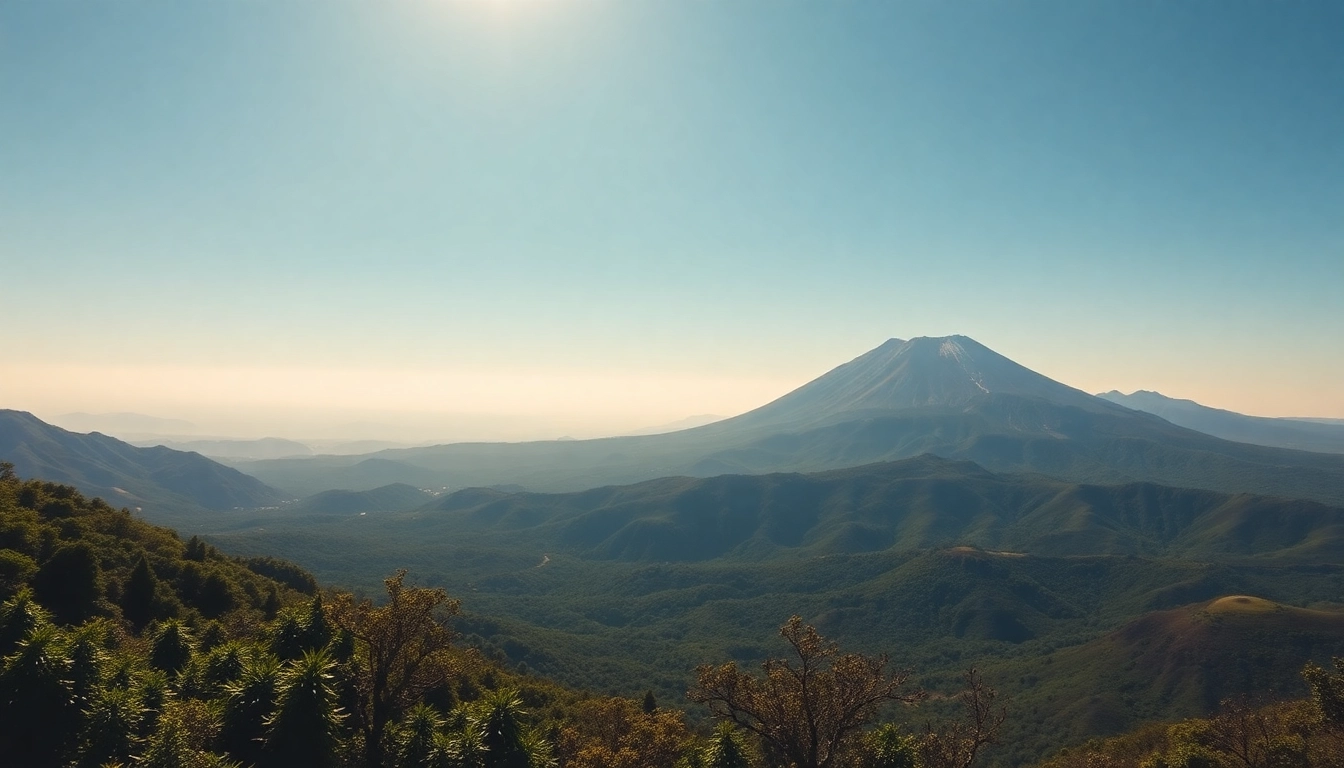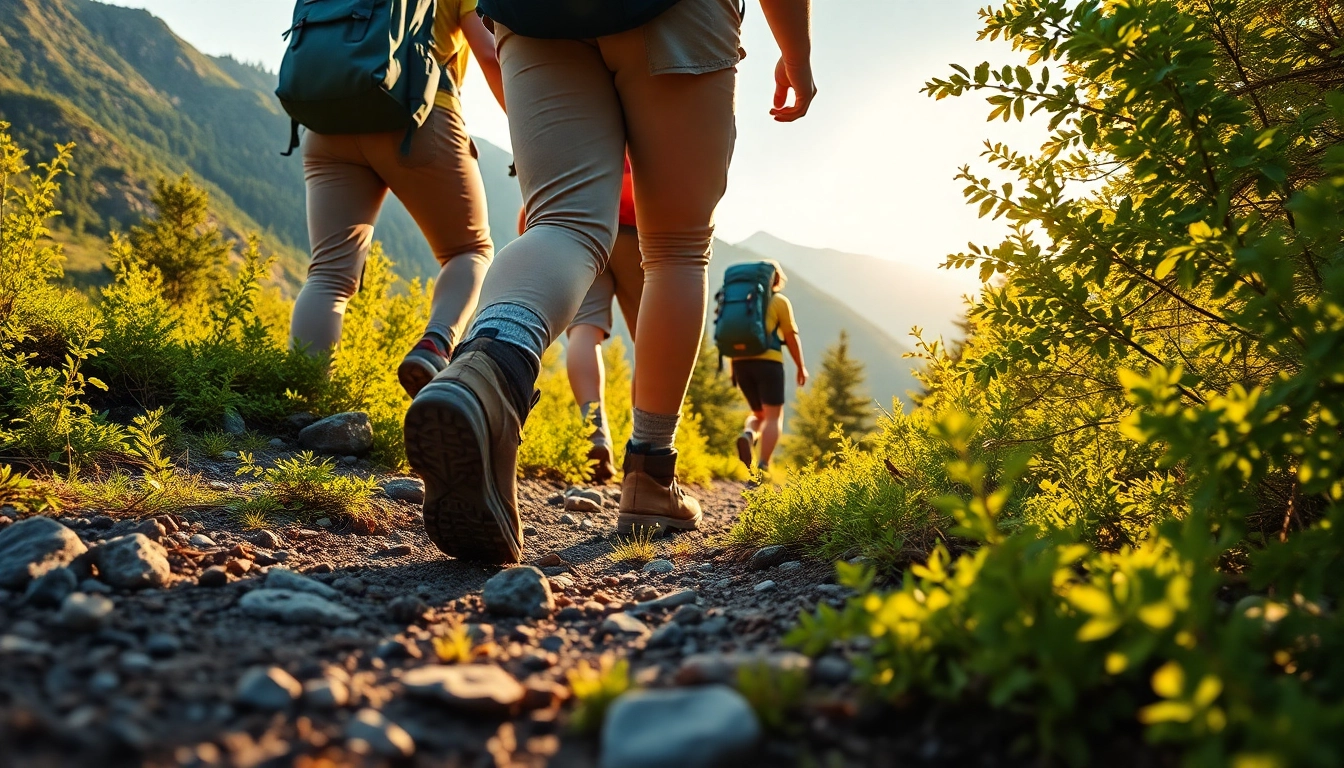Introduction to Mount Rinjani: Indonesia’s Second Highest Volcano
Nestled on the island of Lombok in Indonesia, Mt. Rinjani stands as a majestic testament to the island’s volcanic legacy. Rising to an impressive elevation of 3,726 meters (12,224 feet), it is the second highest volcano in Indonesia, only surpassed by the towering Kerinci on Sumatra. This active stratovolcano has captivated adventurers, nature lovers, and cultural enthusiasts alike due to its striking scenery, challenging climbs, and rich cultural tapestry. As a vital part of the larger Rinjani National Park, it plays a crucial role in regional biodiversity and environmental conservation.
Geographical Location and Significance
Mount Rinjani is situated in North Lombok, within the West Nusa Tenggara province. Its strategic location on Lombok makes it a focal point for both ecological preservation and tourism. The volcano’s prominence is not solely due to its height but also because of its complex geological history. Rinjani was formed over thousands of years through volcanic activity that has shaped the landscape, creating a diverse ecosystem that includes lush forests, crater lakes, and rugged terrains. The mountain’s presence influences local climate patterns and water sources, supporting agriculture and local livelihoods.
The mountain is part of a larger volcanic complex, featuring a caldera measuring approximately 8 by 10 kilometers, which houses the famed Segara Anak Lake—a vivid crater lake that captivates visitors with its emerald waters. Rinjani’s status as an active volcano underscores its global significance, providing scientists with vital data on volcanic activity and eruption patterns. Its activity has been well-documented, with eruptions recorded as recently as late 2015, which also emphasizes the importance of ongoing monitoring efforts.
Historical and Cultural Context
Rinjani has long held cultural and spiritual significance for local communities, particularly the indigenous Sasak people. Traditionally regarded as a sacred mountain, it features prominently in local folklore and spiritual practices. The mountain is believed to be the home of spirits and deities, with several ritual sites and ceremonies dedicated to appeasing these entities. The annual Rinjani festival, attended by locals and visitors alike, celebrates the mountain’s spiritual significance and marks the start of the trekking season.
Historically, Rinjani’s eruptions have influenced both the environment and human settlement patterns. The earliest eruptions date back thousands of years, leaving behind layers of volcanic ash that shaped the soil fertility—beneficial for agriculture. In recent decades, increased tourism and hiking activities have intertwined with these cultural narratives, creating a vibrant heritage that blends natural wonder with local spirituality.
Key Features and Crater Lake
One of Rinjani’s most iconic features is the Segara Anak crater lake, a stunning body of water nestled within the caldera at an elevation of about 2,000 meters. The lake spans approximately 6 square kilometers and exhibits striking shades of blue and green, attributed to mineral deposits and geothermal activity. The lake’s thermal springs and bubbling vents provide both ecological niches and therapeutic opportunities for visitors.
Surrounding the crater are rugged volcanic slopes, hiking trails, and diverse ecosystems. The summit offers panoramic views of the entire island, with vistas stretching over Lombok and neighboring islands like Sumbawa and Bali. The mountain’s diverse geological features—hot springs, fumaroles, and lava formations—are testament to its active status and continually evolving landscape. These geological features not only attract geologists but also enhance the trekking experience through their breathtaking scenery.
Understanding the Mount Rinjani Trekking Experience
Preparation and Equipment for the Rinjani Trek
Embarking on a trek to Mount Rinjani demands meticulous preparation. Due to the mountain’s elevation and unpredictable weather conditions—ranging from tropical heat to cold winds and rain—trekkers must equip themselves accordingly. Essential gear includes:
- Sturdy hiking boots with good ankle support
- Warm and windproof clothing layers
- Rain gear and waterproof backpack covers
- Sleeping bags suitable for cold temperatures
- Headlamps and sufficient batteries
- Sun protection: hats, sunglasses, and sunscreen
- Personal medications and basic first aid kit
- High-energy snacks and hydration supplies
Physical fitness is paramount; hikers should engage in cardio and strength training to build stamina. Acclimatization is also critical given the high altitude; ascending gradually over a few days helps prevent altitude sickness. Certified guides and porters can provide equipment, guidance, and support, making the journey safer and more enjoyable.
Popular Routes and Hiking Challenges
Two main routes are favored among trekkers: the Sembalun route and the Senaru route. Each presents unique challenges and scenery:
Sembalun Route
Known for its gentle terrain and scenic views of the surrounding hills and rice terraces, the Sembalun route is preferred by many for its relative ease. It starts at higher elevation, reducing the risk of altitude sickness, but still demands physical endurance due to the long ascent.
Senaru Route
This route begins from the lush village of Senaru and offers a more challenging ascent through dense tropical forests, waterfalls, and geothermal areas. The terrain can be muddy and steep, requiring good trekking experience.
Regardless of the route chosen, hikers face several challenges such as unpredictable weather, high elevation, and rugged paths. Adequate training, proper gear, and patience are essential for overcoming these obstacles successfully.
Guides, Permits, and Best Time to Visit
For safety and to ensure a respectful interaction with the environment, hiring certified local guides is highly recommended. They possess invaluable knowledge of the terrain, weather patterns, and local customs. Guides typically charge around Rp 350,000 per day, with additional costs for porters and permits. It’s crucial to obtain the necessary permits from Rinjani National Park offices before your trek.
The best time to climb Mount Rinjani is during the dry season, from May to September, when weather conditions are more stable. During this period, clear skies and minimal rainfall improve visibility and safety. The rainy season (November to March) brings increased risks of landslides, muddy trails, and unpredictable weather, which can significantly hinder trekking plans.
Wildlife, Flora, and Conservation of Rinjani National Park
Unique Biodiversity around Mount Rinjani
Rinjani National Park is a biodiversity hotspot, offering a habitat for various endemic and migratory species. The park encompasses lush forests, savannahs, and montane ecosystems. Common fauna includes the Lombok Hawk-Eagle, the Rinjani Scops-Owl, and the endangered Javan Hawk-Eagle. Mammals like wild boars, monkeys, and civets also inhabit the region.
The diverse flora includes rare orchids, ferns, and tropical hardwoods. The crater lakes and geothermal vents foster unique aquatic and microbial ecosystems, making Rinjani a significant site for ecological research.
Conservation Efforts and Environmental Impact
To preserve Rinjani’s natural beauty, ongoing conservation initiatives focus on habitat protection, reforestation, and sustainable tourism. The park authority works in collaboration with local communities, promoting eco-friendly trekking practices and environmental awareness. Regulations prohibit littering, illegal hunting, and unauthorized vegetation removal.
However, increased foot traffic from trekkers and climbers poses environmental threats such as trail erosion and habitat disturbance. Balancing tourism with ecological preservation remains a top priority, employing measures like designated trails, waste management systems, and community engagement programs.
Tips for Eco-friendly Trekking
Visitors can contribute to conservation by:
- Carrying out all trash and waste
- Using biodegradable products
- Remaining on marked trails to minimize erosion
- Supporting local communities and businesses
- Participating in environmental education and awareness programs
Safety Tips and Eruption Monitoring of Rinjani
Understanding Volcanic Activity and Risks
Rinjani’s active status necessitates continuous monitoring of volcanic activity. The volcano’s eruptions can range from mild ash emissions to significant explosive events. The Indonesian Center for Volcanology (PVMBG) provides real-time data, alert levels, and advisories for climbers and residents. Being aware of eruption signs—such as increased seismic activity, gas emissions, and ground tremors—is vital for safety.
Historical eruptions, including those in 2015, have caused temporary closures of the park and prompted evacuation protocols. Trekkers should always check official updates and heed park authorities’ instructions for a safe experience.
Safety Precautions During Trekking
Preparing for potential volcanic activity involves:
- Monitoring weather and activity updates prior to the climb
- Carrying essential safety gear such as masks and helmets
- Maintaining communication devices charged and accessible
- Not ascending during heightened alert levels
- Having a clear evacuation plan and knowing the park’s emergency procedures
Physical safety also entails pacing yourself, staying hydrated, and avoiding risky terrains during adverse weather conditions.
Emergency Response and Park Regulations
The park implements strict regulations to safeguard visitors and the environment. Emergency response teams are on standby, and designated evacuation routes are clearly marked. Visitors must adhere to park rules, including obtaining permits, respecting wildlife, and refraining from unauthorized trail alterations. In case of emergencies, immediate contact with park rangers is essential.
Being prepared, vigilant, and respectful ensures a safe and memorable journey while minimizing risks associated with volcanic activity.
Enhancing Your Rinjani Adventure: Cultural and Local Experiences
Local Sasak Culture and Traditions
Beyond its natural allure, Rinjani offers deep cultural insights through the Sasak people’s traditions. Visitors can engage with local villagers, participate in ceremonial practices, and learn about Sasak architecture and crafts. The mountainside villages host traditional markets where artisans display woven textiles, pottery, and wooden carvings. Respect for cultural customs enhances the authenticity of the experience.
Respecting sacred sites and supporting local tourism initiatives are vital for sustainable development and cultural preservation.
Authentic Culinary Tips and Cuisine
Lombok’s cuisine reflects a blend of indigenous flavors and influences from neighboring islands. Local dishes like Ayam Taliwang (spicy grilled chicken), Plecing Kangkung (water spinach salad with chili), and Sate Rembiga are must-tries. Food is often cooked with fresh herbs and spices, providing a flavorful journey for the palate. Travelers should also sample fresh tropical fruits, traditional snacks, and beverages such as Bajigur (warm coconut drink).
Exploring local markets and family-operated warungs supports the community and offers an authentic taste of Lombok’s culinary culture.
Nearby Attractions and Accommodation Options
After conquering Rinjani or to plan your journey, several attractions await. The nearby waterfalls of Sindang Gila and Tiu Kelep showcase Lombok’s lush biodiversity. The serene beaches in Kuta and Senggigi provide tranquil retreats post-trek. Cultural sites like Ngurah Rai’s traditional Sasak villages and the historic Bayan Lombok further enrich the experience.
Accommodation choices range from eco-lodges and homestays in villages to luxury resorts in Senggigi. Many facilities offer tours, transportation, and guided experiences to complement your adventure.

